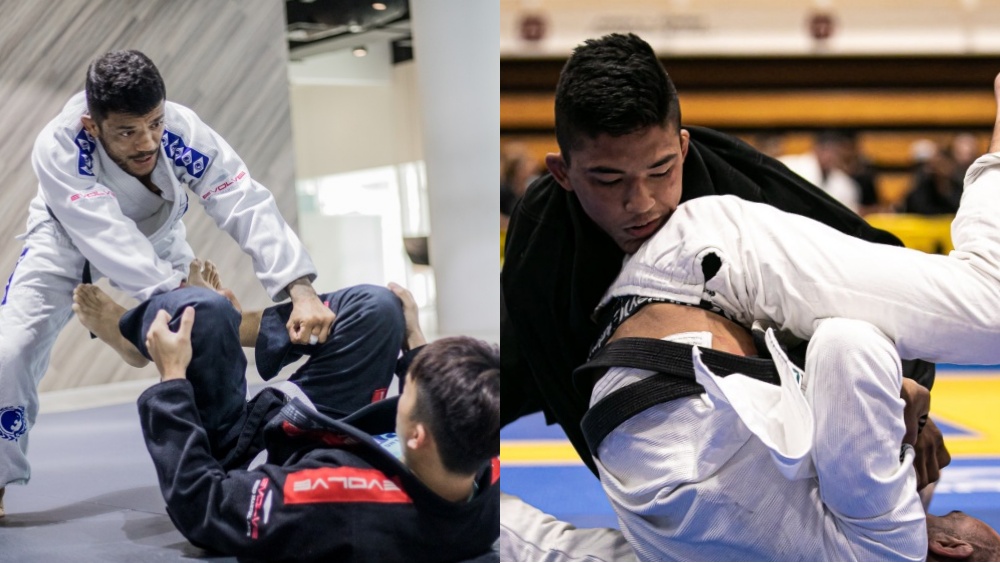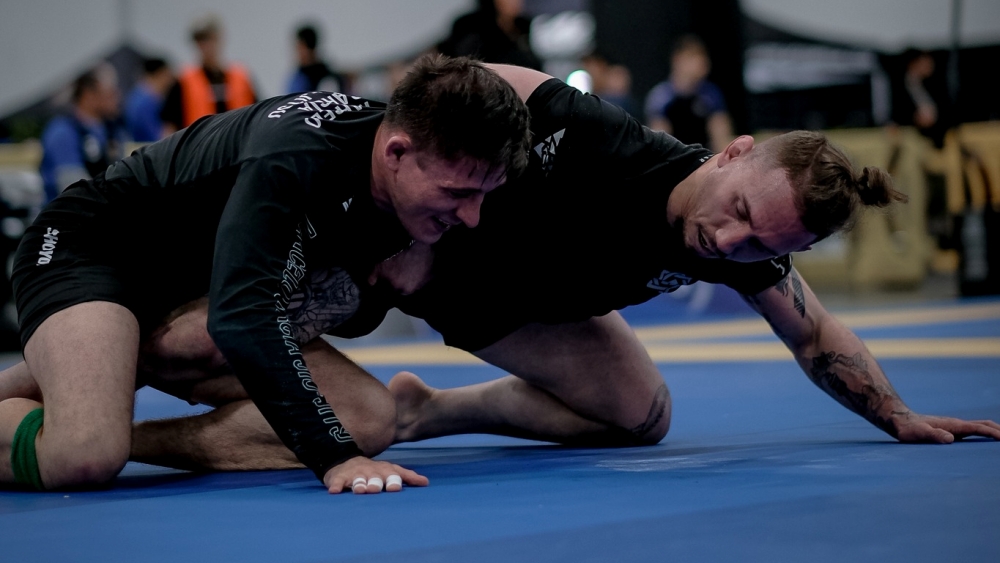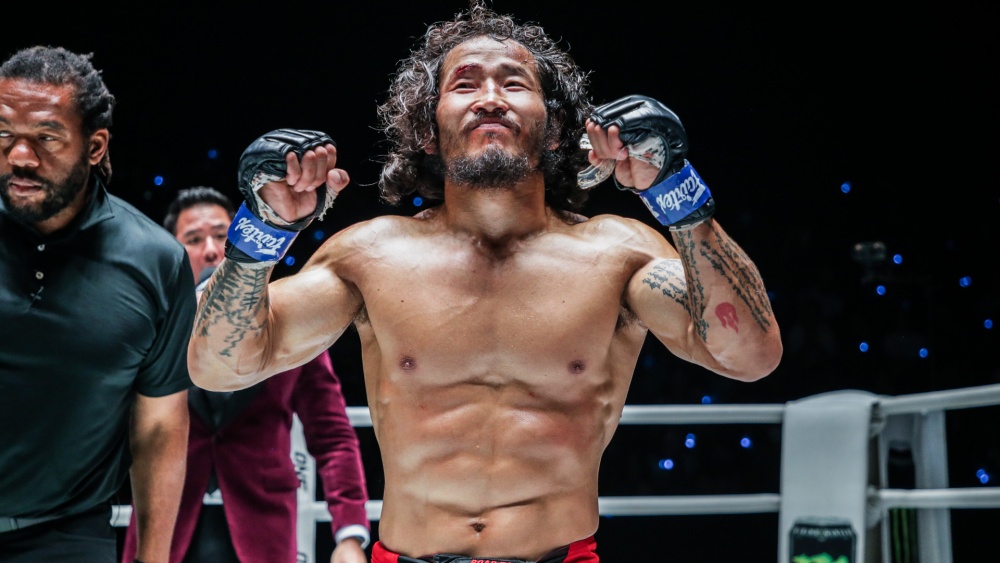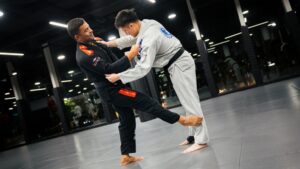In Brazilian Jiu-Jitsu, there are many ways to approach your grappling. Every grappler is unique, and mimicking what may have brought success to other grapplers may work for you differently. The good thing is there are numerous techniques in grappling that you can always work on and add to your game.
Guard passing is a good example of this. While there are many ways to pass the guard, we can classify guard passing techniques into two different styles. Today, we will discuss and compare speed and pressure passing in BJJ.
What Is Speed Passing?
Speed passing in BJJ is a way of passing the opponent’s guard using quick and explosive movements to pass through their legs so you can land in a dominant position. Speed passing typically uses a lot of feints, footwork, and athletic movements like the cartwheel. It relies on misdirecting the opponent’s energy, creating angles and openings that leave their upper body undefended from the pass.
Usually, speed passes favor the smaller, younger, more agile, and athletic grapplers. However, timing is the most critical part of this type of pass, as your ability to anticipate the opponent’s movements. Remember that speed passing is not mainly focused on moving faster but decreasing the opponent’s reaction time as you pass and move on to control them in a dominant position or quickly apply a submission. It is the more entertaining style of passing when compared to pressure passing.
What Is Pressure Passing?
Pressure passes are guard passing techniques that misalign the opponent’s body using your body weight to apply pressure to pin their hips and legs to pass the guard. By doing so, you are neutralizing the opponent’s use of their most significant line of defense: the legs. This type of pass requires patience as you slowly work your way up past the opponent’s legs to eventually land in a dominant position.
Staying tight with the opponent to control space is vital when pressure passing. Using your body weight to pin their hips and control their lower body puts them in compromising positions, leaving them only with their arms to defend. Making them carry your weight as they relentlessly use their arms to frame and their lower body to create space while trapped is an intelligent tactic to exhaust the opponent.
Any grappler can adapt pressure passing in their arsenal. Though this type of pass is best suited on heavier grapplers as they have more weight for the opponent to carry, this shouldn’t hinder lighter grapplers from performing these techniques as it works just as well when used against opponents of similar size.
Speed And Pressure Passing
All types of passes require good use of timing and pressure. It is difficult to pressure the opponent without timing and to secure a dominant position without pressure. All good guard passers have excellent timing and pressure and understand how to mix the two when facing opponents with different styles. To develop a more well-rounded game, you must build a guard passing system that uses both speed and pressure passing.
Speed and pressure passing can be used alternatively depending on the opponent’s leg elevation when you are passing their guard, and they are on their back. Leg elevation can be broken down into three parts – low, mid, and high. Low elevation is when the opponent’s legs are parallel to the floor. In this case, the opponent is open for speed passes like the toreando or knee cut/slice. Toreando in this position is effective because you can directly control their legs and walk around to the side. Knee cut/slice, because their legs are already at the perfect angle, makes it easier to enter into the other knee cut variations.
Mid-leg elevation is the most challenging position to pass. It is when the opponent’s feet are aimed around your chest. In this case, for you to attempt speed passes like the toreando or knee cut/slice, you must initially force their feet down. It can be challenging as the opponent’s feet are often moving around.
High leg elevation is a position where the opponent is almost self-stacking. This can typically be seen in really flexible opponents. The challenge this composes is that if you want to do speed passes, the opponent’s legs are up high, making it difficult for you to bring them back down. As you look to get the opponent’s legs down, they can already apply different controlling grips.

To mix the two styles of guard passing, when the opponent’s leg elevation is low, you can attack them with speed passes. If their feet are up high, you can start attacking with a pressure pass where you can quickly grab their ankles and pin them above their head. Once you’re in this position, place your knees on their lower back and start building your pressure passing from there.
Ultimately, you have to take what the opponent gives you, not what you want, with their leg positioning. If the opponent sets themselves up for the perfect pressure pass (high elevation), take the opportunity rather than forcing the speed pass, which works best when their leg elevation is low.
As you move from one guard pass to the next, the interesting thing is that when the opponent is self-stacking, and you start going for the pressure pass, they will resist by forcing their feet back down. This will open them up to different speed pass sequences as soon as they push their feet down (which puts them in low leg elevation). Similarly, if you are a grappler who only pressure passes, you may sometimes have a hard time keeping the opponent’s legs down and trying to dig underneath for the double under position to get the stack. Rather than forcing the pressure pass, you can consider moving to any variation of a speed pass if the opportunity presents itself.
Final Thoughts
The ideal way to pass the guard is to link speed and pressure passes. Understand that there are circumstances where you need to perform speed passes, especially when you are running out of time and have to pass the opponent’s guard to win the match. Likewise, when you’re up in points, you may stay in the pressure stack pass position as long as you need to psychologically break your opponents before passing their guard.
You may also like:
















